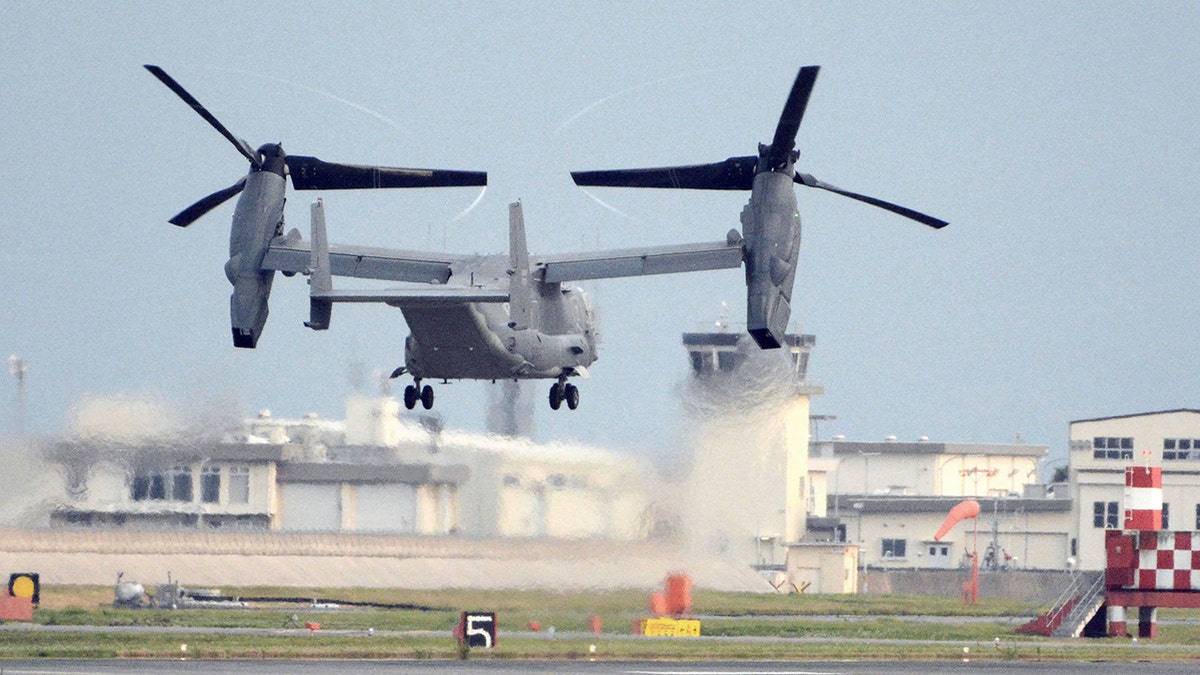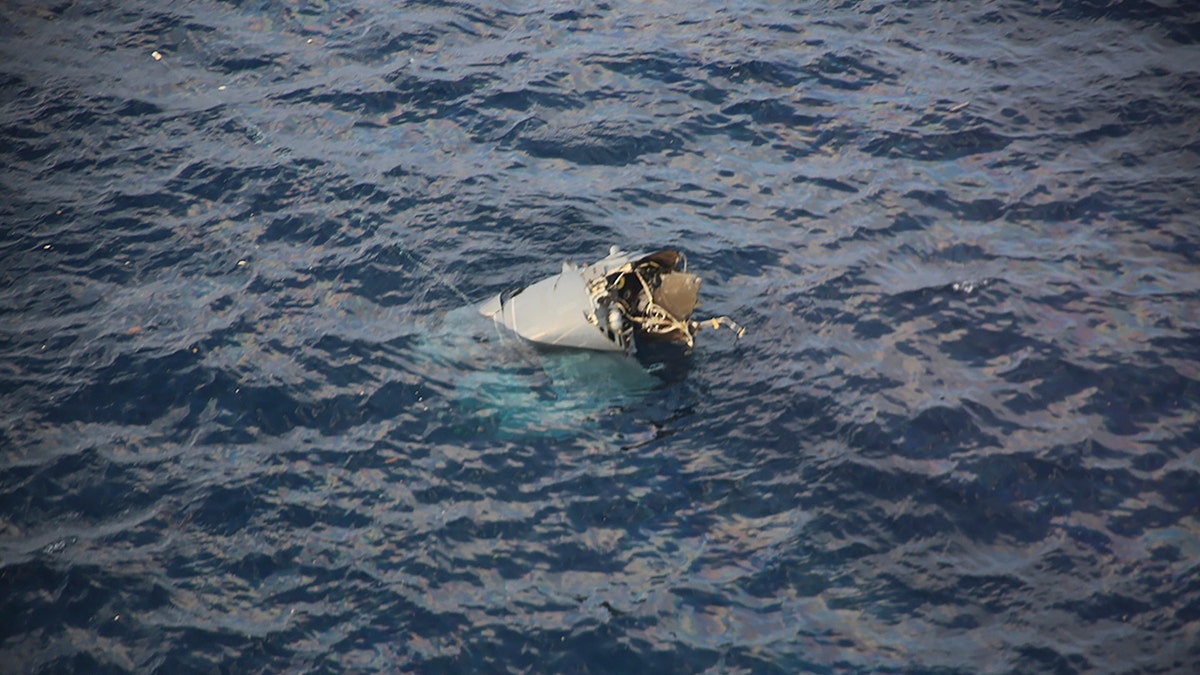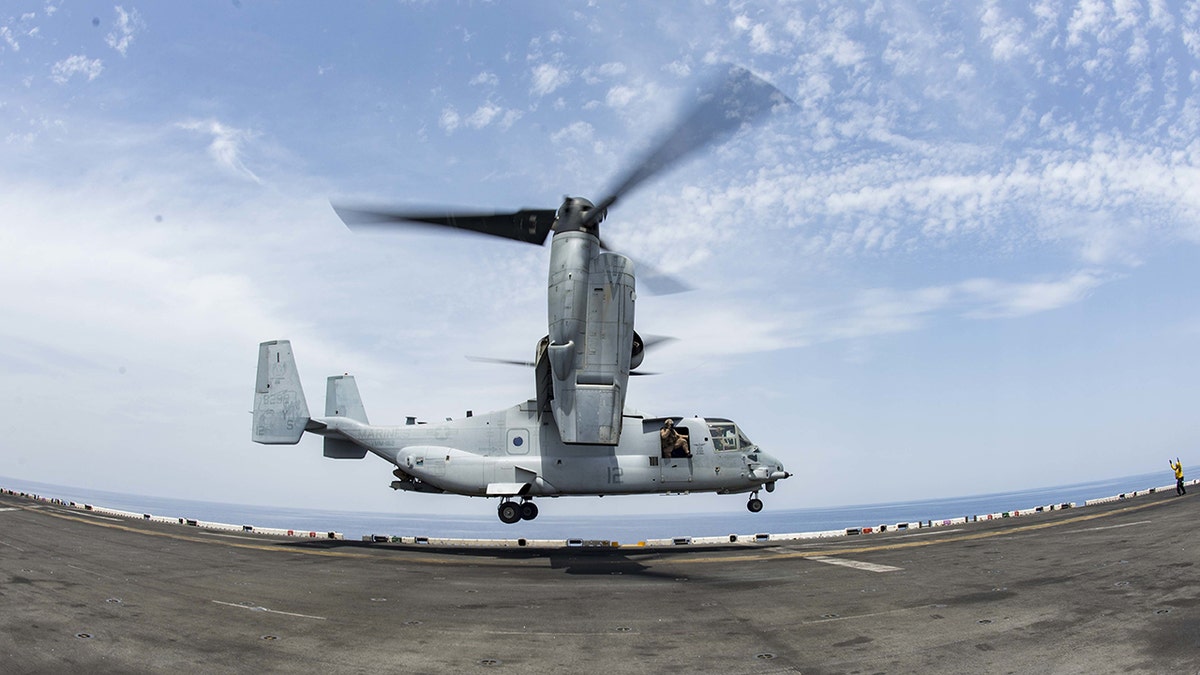Congress launches probe into Osprey aircraft program following series of fatal crashes
A congressional oversight committee has launched an investigation into the U.S. military’s Osprey aircraft program following a deadly crash in Japan last month which killed eight Air Force special operations service members.
The tilt-rotor plane – which can fly like a helicopter and a fixed-wing aircraft — has been besieged by problems over its 30-year history with more than 50 U.S. service members dying in crashes involving the Bell Boeing V-22 Osprey. Twenty of those died in four separate crashes over the last 20 months.
The entire Osprey fleet remains grounded following the Nov. 29 crash, with the exception of limited Marine Corps flights in emergencies, and on Thursday House Committee on Oversight and Accountability Chairman James Comer, R-Ky., sent a letter to Defense Secretary Lloyd Austin requesting a massive amount of documentation on the Osprey’s safety record to be delivered to the committee by Jan. 4.
BODIES OF 3 MARINES KILLED DURING IN AUSTRALIAN OSPREY CRASH PULLED FROM SITE OF CRASH
“The Committee remains concerned about safety and performance issues surrounding the Osprey program,” the letter reads.
“Further concern is warranted because the Department of Defense (DoD) grounded its entire fleet of Ospreys to mitigate risks. It is crucial for the safety of our servicemembers to ensure transparency, accountability, and a thorough understanding of the steps DoD is taking to mitigate any further mechanical risks.”
The Committee has requested a tranche of documents and communications including safety records, maintenance records, training protocols as well as a list of incidents and accidents involving the Osprey aircraft.
The letter also requests performance evaluations, modifications or upgrades made to improve performance, any independent assessment or review conducted by a third party since 2009 in DoD’s possession, as well as the costs associated with the Osprey program and the DoD’s future plans for the program.
The letter, citing the Department of Defense Inspector General, states that the Osprey has been plagued with reduced visibility and engine failure, while there have also been several Osprey crashes due to faulty gearboxes.
Comer’s letter praised the aircraft’s capabilities, noting that the aircraft can carry 24 combat troops twice as fast and five times farther than previous helicopters, but still raised concerns about its safety.

AIR FORCE SPECIAL OPERATIONS COMMAND GROUNDS CV-22 OSPREY AIRCRAFT OVER SAFETY CONCERNS: REPORT
“Over nine years of attempts to redesign the U.S. Navy’s version of the aircraft to prevent engine failure, crash casualties continue.”
The letter states that while the Osprey is not considered as dangerous as some other military aircraft, the Committee “remains alarmed that most fatalities involving the aircraft have happened during training exercises, not combat operations.”
He also raised the aircraft’s economic benefit to the economy, employing over 27,000 people across 44 states, but also raised questions as to why so much money has been invested into it.
“Each unit cost approximately $120 million to procure, and DoD has purchased over 450 Ospreys, spending billions of dollars in sustainment, operations, and maintenance. The Committee is keen to understand the rationale behind such a significant expenditure and how DoD balances these costs while ensuring military capabilities and readiness.”
Shortly after the Nov. 29 crash, the Air Force said that a malfunction of the aircraft, not a mistake by the crew, was probably the cause. If this is the case, it will be the second known fatal crash caused by a mechanical problem with the aircraft in a year. Three U.S. Marines were killed in August when an Osprey crashed off the coast of northern Australia during a routine exercise transporting troops.

Additionally, in June 2022, an Osprey crashed in California killing all five Marines onboard, while in March 2022, an Osprey participating in a NATO exercise in Norway crashed killing all four Marines onboard.
Another crash landed in the ocean off Okinawa in December 2016, which prompted a temporary grounding of the aircraft.
All three versions of the Osprey, the Marine Corps’ MV-22; the Air Force’s CV-22 and the Navy’s CMV-22 programs are overseen by the Pentagon’s Osprey Joint Program Office. The aircraft became operational in 2007 and has gone through several redesigns.
The Osprey has faced persistent questions about a mechanical problem with the clutch that has troubled the program for more than a decade. There have also been questions as to whether all parts of the Osprey have been manufactured according to safety specifications and, as those parts age, whether they remain strong enough to withstand the significant forces created by the Osprey’s unique structure and dynamics of tilt-rotor flight.

The government of Japan, the only international partner flying the Osprey,has also grounded its aircraft after the Nov. 29 crash.
Meanwhile, on Friday, Senators Ed Markey and Elizabeth Warren, and Rep. Richard Neal also announced they were pressing Austin for answers on the Osprey’s safety record. The three lawmakers, all Massachusetts Democrats, represent the home state of Staff Sgt. Jacob Galliher, one of the eight Air Force special operations service members killed in the Japan crash.
The Associated Press contributed to this report.
Read the full article Here


